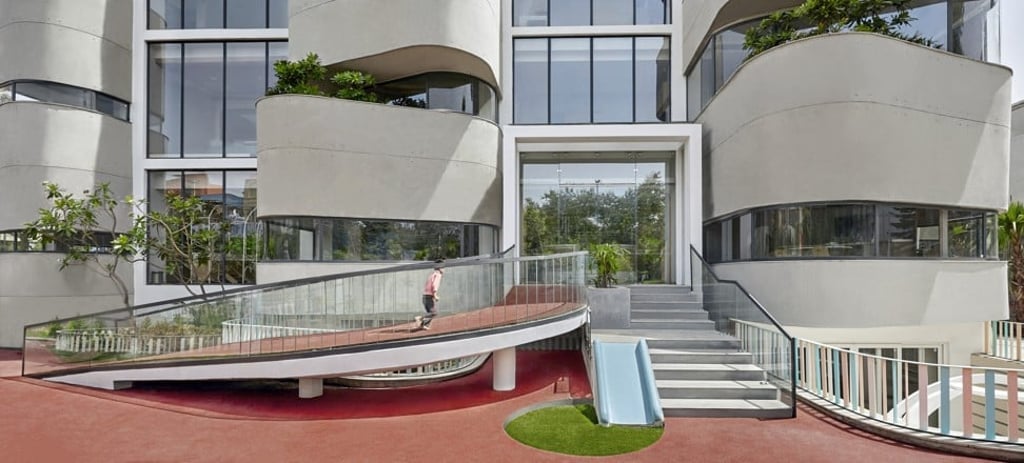Indian preschool’s innovative design gets kids moving and playing
Hong Kong-based PAL Design Group partner Joey Ho Tzung-hsien’s inside-out design for SIS Prep Gurugram, near New Delhi, emphasises learning is about more than lessons

Interpretation
“The client had seen our design for Nubo, an educational play centre in Sydney [completed in 2017], and wanted a similarly innovative design that would break with tradition in India. We started by reconsidering the whole school, from the inside out. The interior should merge with the exterior to create a better learning environment rather than just focusing on lessons. This is what the client hoped to achieve, but we also had to get this idea across to parents.”
Challenges
“Our first challenge was to reshape the architecture. We wanted structural modifications that would connect the building with the outdoors, so we requested a light well in the middle, pocket gardens and for some classrooms to be moved. We changed hard paving to rubber matting to encourage the children to run and play, added a ramp and slide at the entrance to give them choices for coming and going and lowered the windows to the students’ eye level.”

Highlights
“The design emphasises that whole learning is achieved not just through lessons, but also through play. We made it homelike, so the children could feel safe and relaxed, injecting fun and surprises to stimulate the imagination. We have a shoe rack that looks like a tree trunk, a swing that children can use with their parents and an elephant washbasin, with the water coming out of its trunk. There’s also a climbing net where children can ‘float’ in mid-air. Adults are scared of it, kids are not.
“Playrooms accommodate diverse interests: some are better for music, others resemble art studios. What they all have in common is encouraging movement as one of the foundations for a child’s healthy physical and mental development.
“A water-play area and outdoor reading area link directly to the learning space. There are loops in the architecture where children can climb in and out; places to hide under the stairs; and nooks they can crawl in to rest. Defined ‘lagoons’ provide quiet, cosy spaces. We used pink and blue – a palette representative not of gender, but Indians’ love of colour.”
